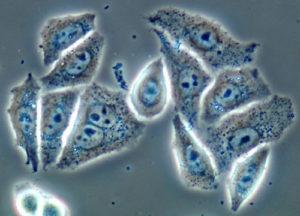Understanding Microinflammation: The Common Link Between Aging, Cancer, and Coronary Disease is a must-read text for chronic disease-focused public health and medical professionals. The book summarizes the current literature on microinflammation in an accessible way for people without a strong biochemistry background. The authors advance the conversation on comprehensive chronic disease etiology and treatment by inviting further research, dialogue, and action from diverse stakeholders, including both practitioners and patients.
The first five chapters effectively describe how oxidative stress and microinflammation affect our bodies with respect to coronary disease, cancer, and aging. Drs. Johnson and Dahiya explain biophysiological pathways and review epidemiological studies on etiology and burden of disease to present a convincing case as to how two modifiable conditions—obesity and type II diabetes—create positive feedback loops between oxidative stress and microinflammation that lead to untimely disease, adverse health outcomes, and death.
The next sections employ the same clear writing that oscillates between describing biophysiological pathways and processes and summarizing the existing research on effective preventive therapies. Importantly, chapter 6 begins by articulating the four arms of chronic, low-level prevention: 1) lifestyle modification 2) chemoprevention [pharmacoprevention], 3) micronutrient supplementation, and 4) nutraceutical administration. Drs. Johnson and Dahiya provide an overview of known solutions that have been proven efficacious—with findings published in the peer-reviewed scientific literature—for addressing various chronic diseases beyond their typical indications. For example, while statins are well known to protect against atherosclerotic disease, the authors highlight research demonstrating statins’ apparent ability to attenuate cancer risk. Johnson and Dahiya also present seemingly simple prevention strategies that for some reason have failed to catch on. For example, sufficient consumption of trace elements like magnesium can help reduce the risk of chronic diseases ranging from diabetes mellitus and high blood pressure to osteoporosis, cancer, and atherosclerosis, yet approximately 60% of all adults in the United States do not meet the estimated average requirement for magnesium intake. Citing evidence-based research, this book aggregates and elucidates the well-known and lesser known effects of currently available products, both prescribed and over-the-counter.
Echoing the words of famous Greek philosopher Heraclitus, this book closes reminding us that the only constant is change. Our knowledge continues to grow, and along with it our understanding of the intertwined and interconnected nature of all of these pathways and processes. As a field, we must continue to employ biologically plausible hypotheses and follow the statistically significant associations that appear in epidemiological research to uncover the etiology of both new and existing disease. With an explicit call to patients and practitioners alike to take ownership of health and employ strategies based in the wealth of available data, this book implores us to reimagine the landscape of health and wellness, positioning microinflammation at the center. Through this new conceptualization, we will be able to better understand and address risk factors and diseases and improve the quality and length of life, ultimately cultivating a healthier collective.
- A New Year, A New Needed Perspective - November 17, 2022
- Navigating the Line Between Discomfort and Uncomfort: Exploring Cultural Immersion - November 2, 2022
- Locating Eckhart Tolle’s “A New Earth” Within Current Public Health Epistemology: A Book Review - October 12, 2022





Pingback: HIVE Wellness Book Review: Understanding Microinflammation - HIVE Wellness